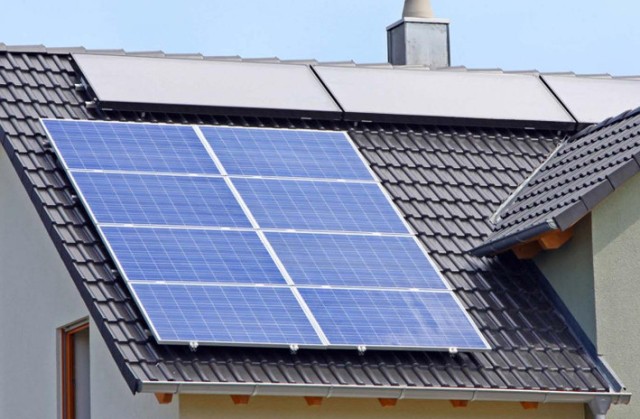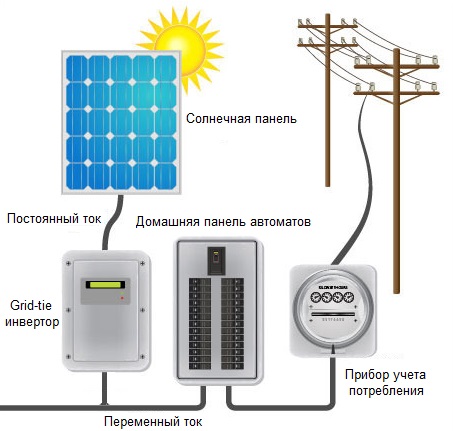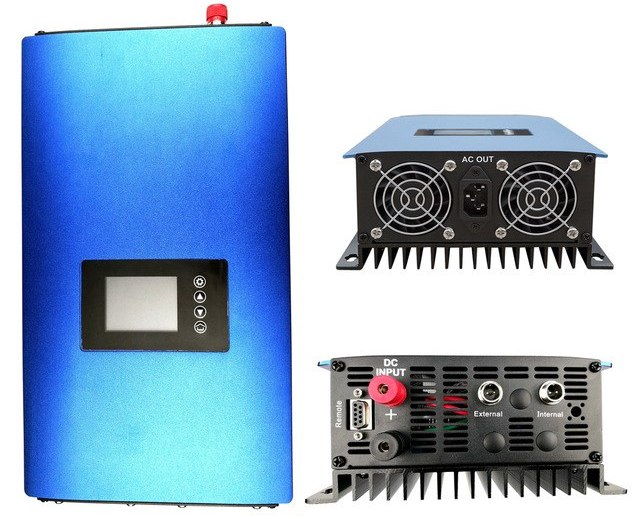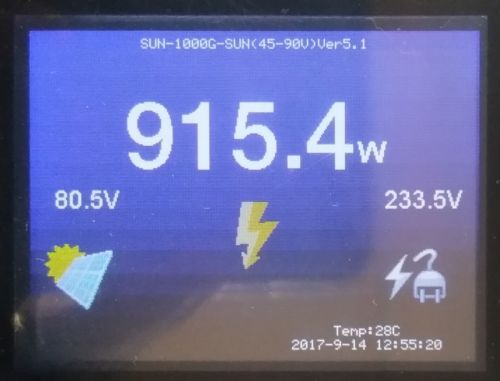Categories: Featured Articles » Autonomous power supply
Number of views: 4956
Comments on the article: 5
Network grid-tie inverters for solar panels
In those areas where it is problematic or impractical to connect to a centralized power grid, especially in sunny regions, people often resort to use in their private farms solar panels. They convert the energy of solar radiation into electricity, and thus allow the consumer to receive electricity for their own needs, regardless of the state power grid.
But due to the fact that the generation of electricity on solar panels is uneven (at different times of the day, as well as depending on cloud cover and current climatic conditions), the person has to accumulate the received energy all the time in high-capacity batteries. Such batteries are expensive, and their life is limited.
Lead batteries will work in such a system for about 5 years, and lithium batteries - for about 10 years, but they also cost 5 times more expensive than lead. Thus, in the end, it is the batteries that increase the real cost of electricity generated by solar panels.
In practice, it turns out that the payback period of a solar system with batteries and an inverter does not justify its use, and it would be much more profitable to conduct a conventional network, connect like everyone else, and receive electricity from a conventional power plant.

Is it possible to completely rid your system of solar panels from batteries, but at the same time use all the benefits that it can give? In principle, it is possible. For this, it will be necessary to simply supply the electricity generated by solar panels to the common network all the time, where in fact it is always needed.
When it’s night in the yard, the owner of the solar panels would, if necessary, receive electricity from the general power grid, and during the day he would supply an excess of the electricity generated by his solar panels to the network, and thus his solar panels would always remain at work, and he and his household - with electricity. Just install network Grid-tie inverter.

Suppose that the owner’s private solar system supplied 360 kWh of electricity to the network in a month, but over the same month 300 kWh was taken from the general grid by this farm. This means that the balance in favor of our person amounted to 60 kWh, which he gave in excess of what he consumed.
So, in principle, next month the electricity supply company can return these 60 kWh to him without charging any fee for them, or the company itself can pay this person for them. They do this in the USA: an agreement is concluded between the owner of the solar panels and the distribution company, an inverter that meets all the requirements of the grid-tie is installed on the system, and everyone is happy.
What is a grid-tie inverter? Grid - network, tie - connected. Network connected inverter. In general, an inverter, in the usual sense, is a device that converts direct electric current into alternating current of a voltage and frequency standard for a network - 240 volts 50 Hz or 120 volts 60 Hz.
But the grid-tie inverter, in contrast from a conventional inverter, is switched on not between the battery and the consumer, but between the local source of electricity, which can be a small solar power plant, and the mains.
This inverter during its operation sensitively monitors the frequency and phase of the sinusoidal mains voltage in order to adequately and with high accuracy in time supply electricity to this network. To do this, the inverter must maintain its output voltage slightly higher than the current voltage in the network, and the phase advance should not exceed 1 degree with respect to the mains.

The Grid-tie inverter is controlled by a microprocessor, which monitors the frequency, shape and phase of the mains voltage in real time, and then, in real time, provides an alternating sinusoidal voltage of the corresponding frequency and, most importantly, the phase, while ensuring an adequate balance of reactive power , depending on the nature of the load created by the currently connected consumers.

So in the network there is no overvoltage or overload. If, for some reason, the voltage disappears in the centralized network, the inverter microprocessor instantly initiates a disconnection from the network (this is a requirement of the U.S. National Electrical Standard) so that the power supply at least remains de-energized for maintenance personnel.
In practice, such an inverter, once correctly installed, does not require any maintenance in the future, and, more importantly, does not require a storage battery.
Grid-tie inverters are transformer (with low-frequency transformers) and high-frequency (transformers and smaller chokes are used).
Low-frequency transformer inverters immediately generate electricity suitable for supply to the mains. High-frequency ones first convert the low-voltage direct voltage to high-frequency pulse voltage, then the pulse current is rectified, and only after that it is supplied to the network with the corresponding low frequency and phase. Transformerless inverters (without galvanic isolation) are unsafe.
See also from foreign experience: Closed loop wiring and its use
See also at i.electricianexp.com
:
